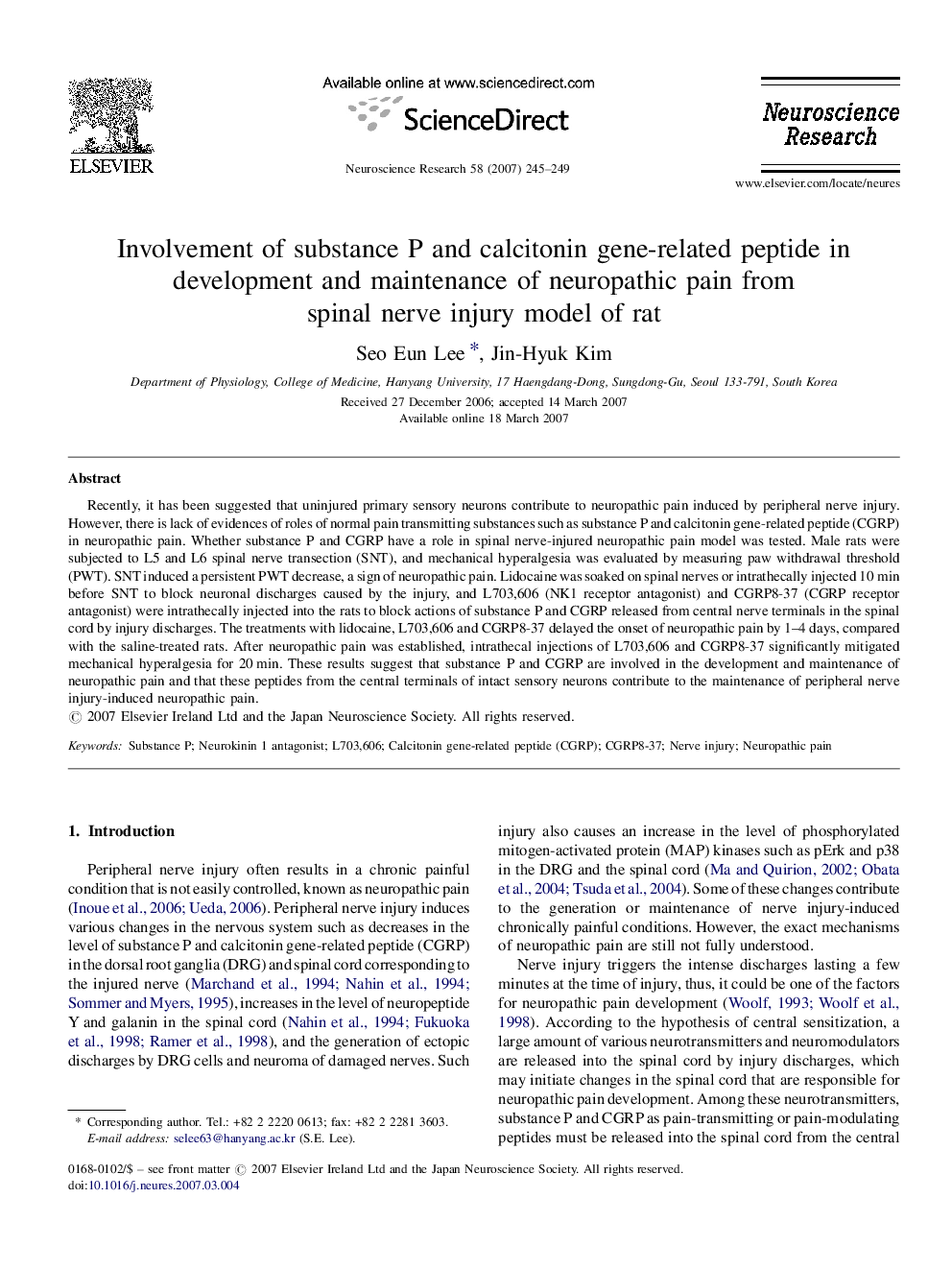| Article ID | Journal | Published Year | Pages | File Type |
|---|---|---|---|---|
| 4352146 | Neuroscience Research | 2007 | 5 Pages |
Recently, it has been suggested that uninjured primary sensory neurons contribute to neuropathic pain induced by peripheral nerve injury. However, there is lack of evidences of roles of normal pain transmitting substances such as substance P and calcitonin gene-related peptide (CGRP) in neuropathic pain. Whether substance P and CGRP have a role in spinal nerve-injured neuropathic pain model was tested. Male rats were subjected to L5 and L6 spinal nerve transection (SNT), and mechanical hyperalgesia was evaluated by measuring paw withdrawal threshold (PWT). SNT induced a persistent PWT decrease, a sign of neuropathic pain. Lidocaine was soaked on spinal nerves or intrathecally injected 10 min before SNT to block neuronal discharges caused by the injury, and L703,606 (NK1 receptor antagonist) and CGRP8-37 (CGRP receptor antagonist) were intrathecally injected into the rats to block actions of substance P and CGRP released from central nerve terminals in the spinal cord by injury discharges. The treatments with lidocaine, L703,606 and CGRP8-37 delayed the onset of neuropathic pain by 1–4 days, compared with the saline-treated rats. After neuropathic pain was established, intrathecal injections of L703,606 and CGRP8-37 significantly mitigated mechanical hyperalgesia for 20 min. These results suggest that substance P and CGRP are involved in the development and maintenance of neuropathic pain and that these peptides from the central terminals of intact sensory neurons contribute to the maintenance of peripheral nerve injury-induced neuropathic pain.
